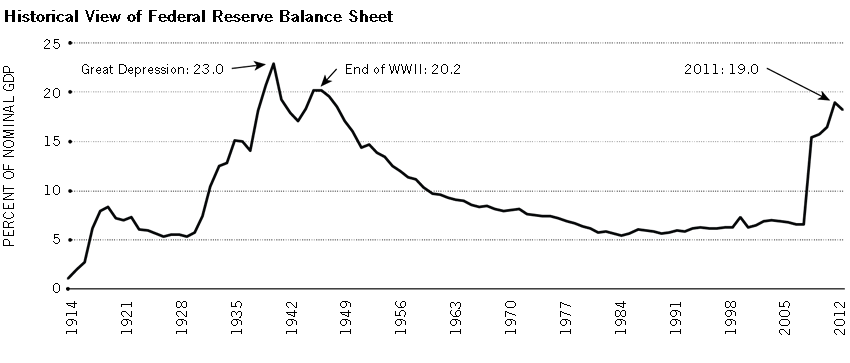“A billion here, a billion there and pretty soon you’re talking about real money” – Senator Everett Dirksen
When the late Senator Dirksen served in the Senate, billions were the denomination of the U.S. government. A half a century later, trillions are the current denomination of the U.S. Government. It is extremely difficult to get a feel for the size and scope of a trillion dollars.
In this era of unprecedented fiscal stimulus the Federal Reserve currently has on its balance sheet assets over $4 trillion dollars. The Bank has assured the American Public that they can reverse this course without disruption to the American economy or bursting an asset bubble.
Can they really? In order to contemplate such a statement one should first try to put $4 trillion dollars in perspective.
Germany currently has a GDP of $3.6 trillion dollars according to the IMF. France is at 2.7 trillion while the UK is producing 2.5 trillion. In other words, the Federal Reserve’s balance sheet is so big we could have paid for the entire German nation to go on vacation for one full year with money left over.
The Federal Reserve’s balance sheet is huge and unprecedented. The Federal Reserve has indicated that the bond buying program will stop in October and they will begin unwinding the balance sheet. Lowell R. Ricketts and Christopher J. Waller of the St. Louis Federal Reserve wrote a concise article on the history of the program which you can read by clicking the following link, The Rise and (Eventual) Fall in the Fed’s Balance Sheet.

NOTE: The lengthier historical time series featured in Figure 2 requires data of annual frequency. Therefore, the length of the time series does not match Figure 1, which uses monthly data. Annual data for 2013 were not available as of publication.
Kevin L. Kliesen, also of the St. Louis Fed, addressed the proposed exit strategy of the Federal Reserve in the following article last year, The Fed’s Strategy for Exiting from Unconventional Policy: Key Principles, Potential Challenges.
While it all looks nice and neat on paper, things rarely go according to plan. I think it is safe to say that you don’t unwind a policy the size of Germany without a few hiccups along the way.
Image courtesy of StLouisFed.org


